His story is spellbinding. There's a really important message for you in the last two minutes ... but you won't really understand it unless you watch the whole thing.
Click on the picture. (18 min. 48 sec.)

An interactive learning ecology for students and parents in my AP Calculus class. This ongoing dialogue is as rich as YOU make it. Visit often and post your comments freely.



Watch how he displays and talks about statistics. He'll make you laugh and he'll make you think.
Thanks to everyone who helped put this together. I found this to be a great experience for me as a teacher I hope it was also valuable to you as a student.
Anyway, here it is, version 1.0 fresh out of beta. ;-)
Flickr Assignment Rubric
It is paramount that the picture be in tune with the purpose of the assignment. It should show, first of all, the student's understanding of how the photo is related to mathematics. The hot spots are important too, because that's essentially your way of teaching other people. Creativity is a factor, because keeping one's interest in the photo contributes to the learning process. Finally, the picture quality should be kept in mind too. If we can't see the picture, it's going to be hard achieving all the other requirements.
Tags
The picture must be tagged properly with the course tag and assignment tag. If tags are misspelled or no tags are present the photo cannot be graded and will receive a grade of ZERO. Not tagging your photo properly and accurately is analogous to not handing in your work or not putting your name on it.
| Classification | Mathematical Content (50%) | Hot Spots (35%) | Photograph (15%) |
| Level 4 | Packed with mathematical concepts/facts. (Minimum 7 concepts/facts.) | All hot spots accessible; i.e. "smaller" hot spots are "on top" of larger ones, they do not obscure each other. All hot spots are actually labels and relate to parts of the photo (not on blank space with filled in notes). One or more hot spots include a link to a relevant supporting resource on the internet. Minimum 7 hot spots. | In focus or appropriately focused for effect. The subject of the picture occurs "naturally," it is not a contrived shot. Really makes the viewer "see" math in a place they hadn't realized it existed. (Example: trigonometry) |
| Level 3 | Significant number of concepts/facts included. (Minimum 5 concepts/facts.) | All hot spots accessible. Most hot spots are actually labels and relate to parts of the photo. Not more than one hot spot on blank space. One or more hot spots may include a link to a relevant supporting resource on the internet. Minimum 5 hot spots. | In focus or appropriately focused for effect. The subject of the photo has been "set up" or contrived yet still illustrates math found in "the real world." (Example: derivative) |
| Level 2 | Some effort to include content evident. (Minimum 3 concepts/facts.) | Most hot spots accessible. Most hot spots are actually labels and relate to parts of the photo. More than one hot spot is on "blank" space. May or may not include links to relevant supporting resource on the internet. Minimum 3 hot spots. | In focus or appropriately focused for effect. Although it is a "real world" picture, objects have been used to "draw" the math. An obviously contrived shot. (Example: trigonometry) |
| Level 1 | Very scarce content related to assignment. | Less than three hot spots are visible or have information related to the theme of the assignment. | It is evident that little effort went into finding and shooting a picture that reflects the theme of the assignment. |
| Level 0 | Content unrelated to theme of assignment. | No hot spots or mostly unrelated to the theme of the assignment. | Out of focus and/or otherwise difficult to look at. |
Creativity (up to 5% bonus)
The maximum possible mark for this assignment is 105%. You can earn up to 5% bonus marks for being creative in the way you approach this assignment. This is not a rigidly defined category and is open to interpretation. You can earn this bonus if your work can be described in one or more of these ways:
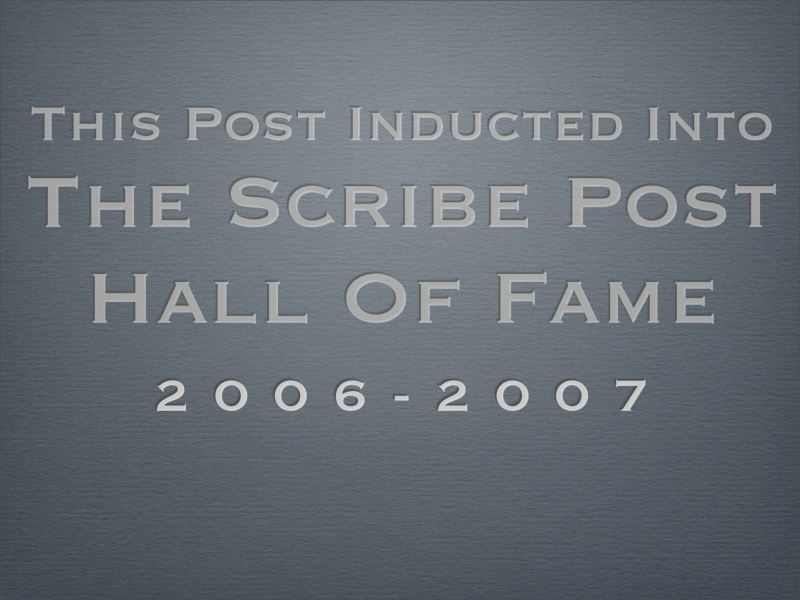 Well it's Manny and I'm your scribe for today! Todays class we did on our pre-test on our fifth unit on applications of derivatives. Here's the questions with the answer, and what I think the solutions are to get the answer.
Well it's Manny and I'm your scribe for today! Todays class we did on our pre-test on our fifth unit on applications of derivatives. Here's the questions with the answer, and what I think the solutions are to get the answer. 


 An antiderivative is basically just DIFFERENTIATING the function backwards. The rule for finding the FIRST derivative from the PARENT function has been reversed.
An antiderivative is basically just DIFFERENTIATING the function backwards. The rule for finding the FIRST derivative from the PARENT function has been reversed. Applying the rules for the antiderivative, we came up with the answer. If your wondering where the "C" came from, good for you! C is an unknown constant in the parent function. We don't have any evidences that a constant exists within the parent function.
Applying the rules for the antiderivative, we came up with the answer. If your wondering where the "C" came from, good for you! C is an unknown constant in the parent function. We don't have any evidences that a constant exists within the parent function. For this example, we were given a point in the graph, (1,2). Using this information, we can identify the unknown constant, "C", by substituting the values into the parent function.
For this example, we were given a point in the graph, (1,2). Using this information, we can identify the unknown constant, "C", by substituting the values into the parent function.
 Note: Remember that the derivative of cosX is -sinX. Therefore the "antiderivative" of "sinX" is the negative of "cosX".
Note: Remember that the derivative of cosX is -sinX. Therefore the "antiderivative" of "sinX" is the negative of "cosX". If you're wondering why antiderivatives have a stretched "s" like a definite integral, congratulations! The format of the antiderivative itself is formally known as an "Indefinite Integral". It's the opposite of a definite integral because it has NO limits/intervals (the number at the 2 ends of the "s").
If you're wondering why antiderivatives have a stretched "s" like a definite integral, congratulations! The format of the antiderivative itself is formally known as an "Indefinite Integral". It's the opposite of a definite integral because it has NO limits/intervals (the number at the 2 ends of the "s").
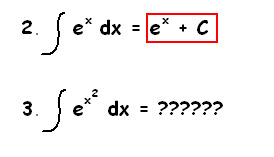
 Correction: "no inflection points [f"(x) not equal 0]"
Correction: "no inflection points [f"(x) not equal 0]"





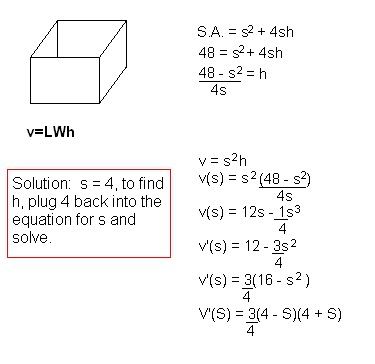
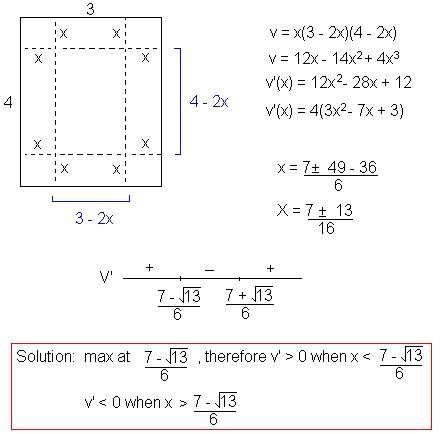
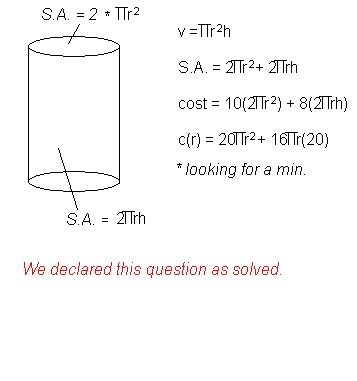

 This is Lindsay subbing for Anh!! =D
This is Lindsay subbing for Anh!! =D










It is probably easier to memorize these three rules, but if you think you will forget them over time, it is probably better to remember that dividing by the highest power of x will allow you to find the horizontal asymptote. That's what Sherlock Holmes would do, anyway. :)
In this problem, the third case applies. So we get an asymptote at 2/1.
If the numerator had been 2x^3, the second case would apply and the horizontal asymptote wouldn’t exist.
And if the x^2 in the denominator had been x^3, then the horizontal asymptote would have been at y=0.
So that’s about it. Just remember...
By finding the limit as x approaches infinity you can find any horizontal asymptotes.
If the limit as x approaches some value a approaches infinity, there's a vertical asymptote.
And Jupiter has 63 known moons.
Next scribe shall be… Anh.
